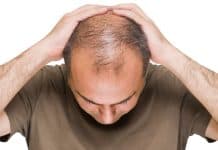Hair loss not only affects your scalp but also impacts on your confidence. To get rid of this condition, you need to choose the best hair transplant surgeon. A hair transplant in Punjab will help you to regrow hair at the scalp. To get the treatment, you need to talk to the doctor, so that he can examine your condition properly.
Dermatologists learn that the origin of hair loss is hereditary, medicine, or environmental through knowledge of symptoms of hair loss. They visually analyze the hair loss trend to figure out the form of hair loss and validate diagnosis through the use of advanced techniques like a computerized measurement device which magnifies the look of the scalp up to 1000 times.
Medical history
When hair loss occurs, what the trend of hair loss is, what type of patterns of hair is typically used, if hair loss is a family issue, and other specifics about the symptoms. The dermatologists questioned you about the cause of hair loss. He should inquire about all other medical problems. Information, such as what foods you consume or recently have given birth, can offer you an insight into the cause of the loss of hair.
Physical examination to know about hair loss
The skin is examined for swelling, redness, sores, or wounds by a dermatologist. The specialist checks the hair carefully to determine how much is missing, the hair loss cycle and hair loss is disrupted. Your doctor may conduct simple tests during a physical examination to learn more about your hair’s health. The following could be included.
Pull and tug test
This basic check tests hair loss frequency. A dermatologist grasps, during a pull examination, some 40 strands of tiny portions of the head, various areas of the scalp, and soft tugs. And then perform a test to know about your condition.
Card test
The dermatologist uses a card examination to evaluate the safety of hair shafts and to determine the number of fresh hair strands. The procedure is simple: the dermatologist produces a portion of the hair and places a tiny rectangular felt card against a scalp segment. The felt color was meant to vary from the hair color. In this area, new hair strands, even very small or broken hair strips, can be counted and examined against the felt card. If you have thin hair, then it indicates you are suffering from telogen effluvium.
Fungal Culture
A fungal culture is a laboratory check which can prove whether a fungus is present in hair or scalp cells. A dermatologist may recommend this test to find out whether the cause of hair loss is a fungal infection known as tinea capitis or scalp ringworm. A dermatologist can scrub or swab the skin for laboratory examination, or using a small sample of skin or hair. Fungal culture can take many weeks to become stable in the laboratory.




